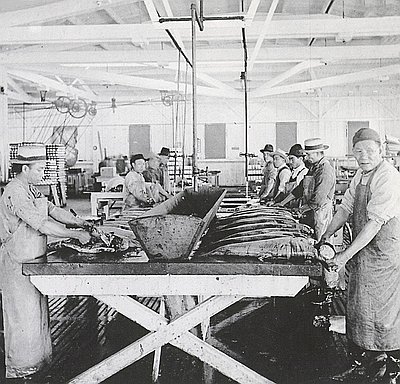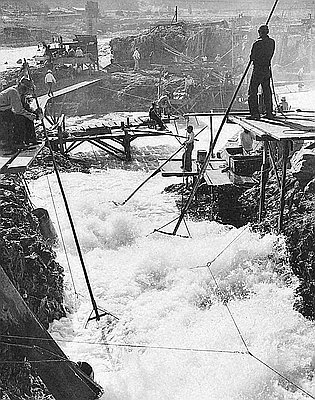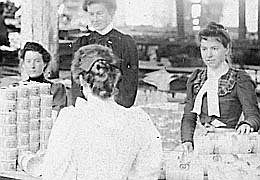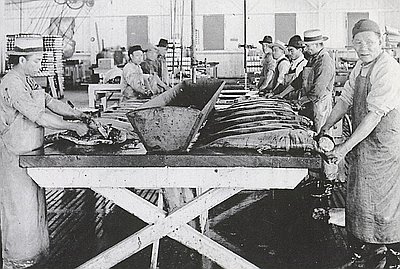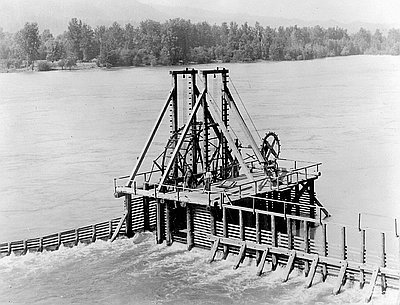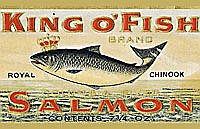Shoreworkers in a Global Context—Chinese Men
The first workers in the canneries were family and friends of the cannery operators, followed by recruits from Portland’s German and Irish communities. By the mid-1870s, contracted Chinese immigrant labor had become the industry norm for workers in the plants. These men lived largely bachelor lives at the canneries, even though they were connected to each other through family and emigrant district associations, as well as to mothers, sisters, and wives in China. In this highly masculine emigrant culture, men attained status by virtue of wages amassed and sent back to their families; their level of technical skills, such as hand-butchering salmon; and their age. In some documents depicting the salmon canneries, Chinese workers stand at butchering tables as skilled fish butchers who received comparatively high waves and were valued in the plants. Their skills set them apart from others in the crew.
Relatively good wages that allowed men to fulfill cultural expectations and have pride in their work allowed Chinese immigrant men to maintain a sense of their own masculinity in the face of a racist environment in which they were regularly feminized. In fact, canners believed that Chinese were good workers because they had both masculine and feminine attributes. One Oregon canner noted that Chinese had “hands as nimble as a woman’s, and . . . the power in [their] . . . fingers and wrists of a man.” It is unlikely that Chinese men accepted such a vision of themselves but instead focused on fulfilling expectations of what was appropriate behavior for sons and husbands. These gendered aspects of Chinese participation in the work are too easily lost when historians view Chinese workers as “cheap” and “coolie” labor. So, too, can such meanings be obscured by extant labor contracts that detail the legal obligations of a canner and a contractor but offer little insight into the cultural meaning of the work for Chinese immigrant men.
© Chris Friday, 2006. Updated and revised by OHP staff, 2014.
Sections
Related Historical Records
Chinese Workers in Astoria Cannery
This undated photograph of the interior of an Astoria cannery is from the Burlington Northern / Spokane Portland and Seattle Railroad Collection. This promotional photograph conveys the message …
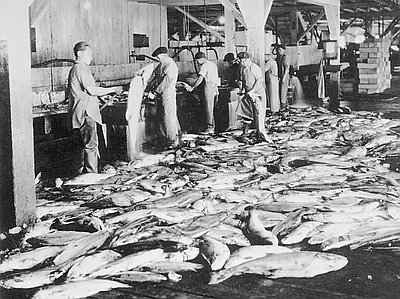
Chinese Cannery Workers near Astoria, Oregon
This stereographic image, printed by the Keystone View Company, has this description of the fish-cleaning process written on the back: “One [person] does nothing but cut off heads, tails, …
